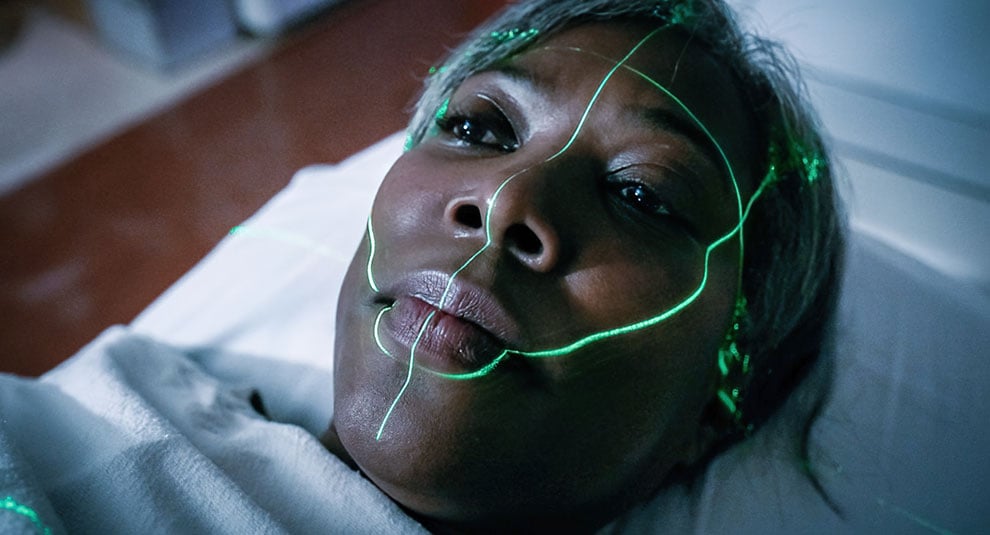Radiation Therapy for Brain Cancer

Often a key component of brain cancer treatment, radiation therapy utilizes high-energy X-rays, gamma rays or protons, which are directly aimed at a tumor. The goal is to damage the DNA of the cancerous cells so they will be unable to grow and thrive. Due to its precise administration, radiation treatment can effectively damage or destroy tumor cells while minimizing any disruption to the surrounding healthy tissues.
External beam radiation therapy
For brain cancer treatment, the most commonly used type of radiation therapy is external beam radiation therapy (EBRT), which involves the use of a special X-ray machine (linear accelerator) located outside the patient’s body. Controlled by a computer, the linear accelerator moves around—but does not touch—the patient, delivering beams of radiation from multiple angles. Because the beams are shaped to the precise contours of the tumor, EBRT can deliver high and precise doses of radiation without harming nearby tissues. This can help reduce the side effects of treatment.
Specific types of EBRT include:
- Stereotactic radiosurgery (SRS) – A large and ultra-focused dose of radiation is delivered to the tumor area in a single session (SRS) or a few sessions (SRT).
- Three-dimensional conformal radiation therapy (3D CRT) – Magnetic resonance imaging (MRI) scans and special computers are used to map the location of the tumor with pinpoint accuracy.
- Intensity-modulated radiation therapy (IMRT) – During each treatment session, the physician can adjust the intensity of the beams as needed to reduce the radiation exposure to healthy tissues and increase the dose delivered to the tumor.
Internal radiation therapy
Internal radiation therapy (brachytherapy) involves the surgical placement of a small implant in or near a tumor. The implant may be placed during surgery to remove a brain tumor or afterward in the event of recurrence. One type of brachytherapy is GammaTile, which consists of small collagen tiles with tiny radioactive seeds inside them. The tiles are placed in the open space created after a brain tumor is removed. Because the radiation travels only a short distance, it is unlikely to affect other parts of the brain. Over time, the seeds will lose their radioactivity and the tiles will be absorbed by the body.
What to expect with radiation therapy for brain cancer
Although radiation therapy is designed to target tumor cells, it can sometimes affect healthy brain tissues and cause side effects during or soon after treatment. The side effects of radiation therapy can include:
- Fatigue
- Irritability
- Nausea and vomiting
- Headaches
- Hair loss
If a large area of the brain is exposed to radiation, other side effects may occur, such as:
- Memory loss
- Personality changes
- Difficulty concentrating
Radiation therapy can sometimes damage genes in healthy cells. As a result, there is a slight risk of developing a second tumor in the treated area. In most cases, however, the benefits of radiation therapy outweigh the risks.
Benefit from world-class care at Moffitt Cancer Center
The multispecialty brain cancer team in Moffitt’s Neuro-Oncology Program collaboratively develops an individualized treatment plan for each patient. When determining the type of radiation therapy that will potentially be most effective, we consider many factors, including the patient’s age, general health and prior treatments.
If you would like to learn more about radiation therapy for brain cancer, you can request an appointment with a specialist in our Neuro-Oncology Program by calling 1-888-663-3488 or submitting a new patient registration form online. We do not require referrals.
Treatment
